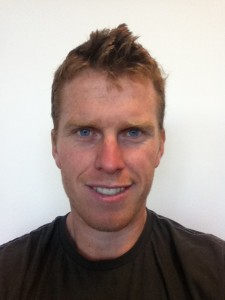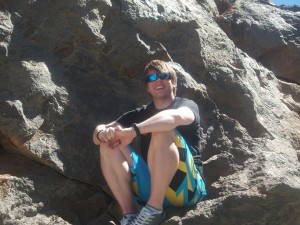Millie Watts
My PhD studies “Su bmarine Mega-landslides and their relationship to climate change”. It will be looking into the palaeoclimate signals from an existing core from the Eirik drift to constrain the date of an anomalous turbidite-like layer from c. 8000 cal yr. BP and determine whether it is sourced from the Storegga Slide (c. 8.2Ka), and its relationship to the 8.2 cooling event. This will be developed further following an Arctic cruise next summer, part of the Arctic Landslide Tsunami program, which will take further cores from the Greenland-Norway basin. My supervisors are Pete Talling, James Hunt, Jenny Stanford (Swansea), Iain Bailey (Exeter), Paul Wilson and Siwan Davies (Swansea).
bmarine Mega-landslides and their relationship to climate change”. It will be looking into the palaeoclimate signals from an existing core from the Eirik drift to constrain the date of an anomalous turbidite-like layer from c. 8000 cal yr. BP and determine whether it is sourced from the Storegga Slide (c. 8.2Ka), and its relationship to the 8.2 cooling event. This will be developed further following an Arctic cruise next summer, part of the Arctic Landslide Tsunami program, which will take further cores from the Greenland-Norway basin. My supervisors are Pete Talling, James Hunt, Jenny Stanford (Swansea), Iain Bailey (Exeter), Paul Wilson and Siwan Davies (Swansea).
I have just finished an MSc in Environmental Dynamics and Climate Change at Swansea University, where my dissertation focussed on the use of Welsh Oak trees to reconstruct regional climate using stable isotopes. I have spent seven years teaching Geography and Geology A-Levels at a sixth form college in Somerset, where I am also an E-Learning and social media consultant.
Ed Pope
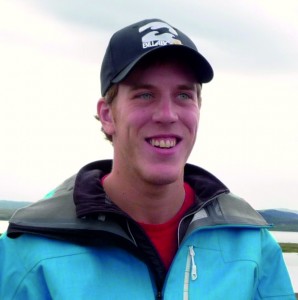 My PhD is focussing on producing a robust chronology of mega-landslides around the Norwegian basin through sampling both the landslide deposits and the associated turbidity current deposits. This will have applications both for understanding sediment transport during extreme events and future geohazard risk analysis for the UK as a consequence of the links between large submarine landslides and climate change. My supervisory team for this project is formed of Dr Peter Talling, Dr Russel Wynn, and Dr Esther Sumner. Previously I completed both a Masters and Undergraduate degree at Cambridge University where my research specifically focussed on remote sensing of glaciers and ice caps as well as subglacial drainage and its impacts on ice sheet dynamics.
My PhD is focussing on producing a robust chronology of mega-landslides around the Norwegian basin through sampling both the landslide deposits and the associated turbidity current deposits. This will have applications both for understanding sediment transport during extreme events and future geohazard risk analysis for the UK as a consequence of the links between large submarine landslides and climate change. My supervisory team for this project is formed of Dr Peter Talling, Dr Russel Wynn, and Dr Esther Sumner. Previously I completed both a Masters and Undergraduate degree at Cambridge University where my research specifically focussed on remote sensing of glaciers and ice caps as well as subglacial drainage and its impacts on ice sheet dynamics.
Josh Allin
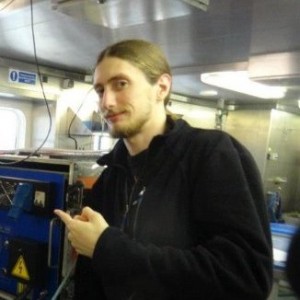 My name is Josh Allin and my PhD involves the determination of submarine landslide extent and frequency in Atlantic basins to help in assessing the tsunami risk to the UK coastline. I form part of the submarine geohazards research group and my supervisors are Dr Pete Talling, Dr Russell Wynn and Dr James Hunt.
My name is Josh Allin and my PhD involves the determination of submarine landslide extent and frequency in Atlantic basins to help in assessing the tsunami risk to the UK coastline. I form part of the submarine geohazards research group and my supervisors are Dr Pete Talling, Dr Russell Wynn and Dr James Hunt.
I have a BSc in Earth science from University College Cork and an MSc in Environmental science/marine geology from Trinity College, Dublin. After finishing my MSc I worked briefly as a trainee geologist aboard the RV Celtic Explorer, and as an external consultant for University College Dublin.
Sam Griffith
 My Project looks into the effects of coastal sediment dynamics on bone taphonomy with archaeological/ forensic implications. My research is focused on achieving a more nuanced understanding of the effects these processes have on bone tissue quality and bio-marker survival in human bone. The study will assess how these destructive, but also potentially illuminating, processes affect forensic and archaeological analysis of skeletal remains recovered from dynamic fluvial environments. This improved understanding will aid the development of sound methodological and analytical frameworks for the study of modern and ancient skeletal remains recovered from coastal areas. Ultimately this research aims to allow unstratified/ decontextualized skeletal material to be utilised more effectively in future medico-legal case work and archaeological studies. Supervisory team: Dr Charlie Thompson, Dr Justin Dix, Dr Tim Thompson and Dr Rebecca Gowland.
My Project looks into the effects of coastal sediment dynamics on bone taphonomy with archaeological/ forensic implications. My research is focused on achieving a more nuanced understanding of the effects these processes have on bone tissue quality and bio-marker survival in human bone. The study will assess how these destructive, but also potentially illuminating, processes affect forensic and archaeological analysis of skeletal remains recovered from dynamic fluvial environments. This improved understanding will aid the development of sound methodological and analytical frameworks for the study of modern and ancient skeletal remains recovered from coastal areas. Ultimately this research aims to allow unstratified/ decontextualized skeletal material to be utilised more effectively in future medico-legal case work and archaeological studies. Supervisory team: Dr Charlie Thompson, Dr Justin Dix, Dr Tim Thompson and Dr Rebecca Gowland.
I received my BA in archaeology from University College Cork in 2010 and completed an MSc in forensic archaeological science at University College London in 2012. I have working experience on a number of Mesolithic and Neolithic archaeological sites.
My projects title is “Imaging Continental Breakup with Ocean Bottom Seismic Techniques”; supervised by professors Tim Minshull and Jon Bull. It aims to resolve outstanding questions surrounding the nature of rifting at the Galicia Margin using a large array of Ocean Bottom Seismometers.
I finished my MSc at Victoria University of Wellington, New Zealand early 2012, then worked for a year in Oil and Gas industry in Perth, Australia.
Jennifer Neale
 Project Title: Storms and Their Seismic Signals: Can seismometers be used to study oceans? Supervisory Team: Dr Nick Harmon, Prof. Meric Srokosz, Dr Christine Gommenginger.
Project Title: Storms and Their Seismic Signals: Can seismometers be used to study oceans? Supervisory Team: Dr Nick Harmon, Prof. Meric Srokosz, Dr Christine Gommenginger.
What my phd is about: Atmospheric disturbances generate ocean waves, which result in pressure fluctuations in the water column, which in turn generate seismic waves. These waves propagate outwards and are recorded by seismometers around the globe. The seismic records therefore reflect ocean conditions, but exactly what they are telling us is still unclear. For my PhD I will be working out what information about the oceans we can gain from the seismic records, and how we can use this to monitor changes in the oceans. I have an MSci Oceanography from the University of Southampton.
Sebastian Pitman
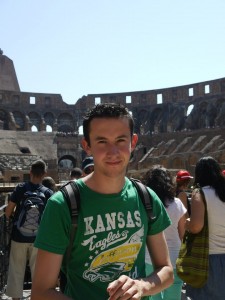 I have just completed a Masters of Research in Applied Marine Science, specifically looking into the creation of an automated remote sensing method to quantify swash action on a beach. This has led quite nicely into my PhD, entitled ‘The formation ,persistence and spacing of rip channels in various coastal environments’, where once again we are seeking to develop an automated algorithm to quantify rip channels. This is a PhD supervised primarily by Shari Gallop & Ivan Haigh (UoS), but also by Gerd Masselink (University of Plymouth), Sasan Mahmoodi (UoS) and Rosh Ranasinghe (UNESCO-IHE).
I have just completed a Masters of Research in Applied Marine Science, specifically looking into the creation of an automated remote sensing method to quantify swash action on a beach. This has led quite nicely into my PhD, entitled ‘The formation ,persistence and spacing of rip channels in various coastal environments’, where once again we are seeking to develop an automated algorithm to quantify rip channels. This is a PhD supervised primarily by Shari Gallop & Ivan Haigh (UoS), but also by Gerd Masselink (University of Plymouth), Sasan Mahmoodi (UoS) and Rosh Ranasinghe (UNESCO-IHE).
Eric Attias
 My project is “Development of joint seismic/electromagnetic tomography for assessment of methane hydrate and associated gas beneath the seafloor”. The aim of the PhD project will be to use previously collected seismic and newly acquired CSEM data of gas chimney structures under pockmarks in the Nyegga region, north of the Storrega slide on the Norwegian continental margin; to develop joint seismic/electromagnetic tomography, as well as further our understanding of the occurrence of methane hydrates within pockmark fields. It is supervised by Dr Karen Weitemeyer, Prof Tim Minshull, and Dr Angus Best.
My project is “Development of joint seismic/electromagnetic tomography for assessment of methane hydrate and associated gas beneath the seafloor”. The aim of the PhD project will be to use previously collected seismic and newly acquired CSEM data of gas chimney structures under pockmarks in the Nyegga region, north of the Storrega slide on the Norwegian continental margin; to develop joint seismic/electromagnetic tomography, as well as further our understanding of the occurrence of methane hydrates within pockmark fields. It is supervised by Dr Karen Weitemeyer, Prof Tim Minshull, and Dr Angus Best.
I have recently completed an MRes in Geology and Geophysics, at University of Southampton, and hold a BSc in Sea and Marine Environment Sciences from Ruppin Academic Centre, Israel.
Will Symons
I have just started my PhD in marine sediment transport. The title of the project is ‘How is sediment transported through submarine canyons?’ and is supervised by Dr. Esther Sumner, Dr. Matthieu Cartigny and Dr. Pete Talling. The understanding of the formation of crescentic-shaped bedforms, initially in Monterey Canyon, California, will give insights into the processes that transport sediment from the head of such canyons to the deep sea.
Prior to beginning this research project, I completed my MSci Geology degree in Southampton from 2007-2011. The following two years were spent working as an exploration geologist and towards the end of my time in Aberdeen, a development geologist in an energy consultancy for the hydrocarbon industry.
